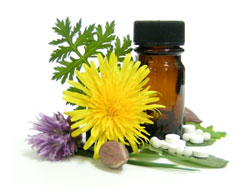Description, history and virtues of the phytotherapy

The Phytotherapy, or the treatment by plants, is a therapeutic method that uses the medicinal action of plants.
There are two types of phytotherapy: A traditional practice, sometimes very old based, where plants are used according to the empirically discovered virtues.
This kind of phytotherapy is regarded as a traditional medicine and still massively employed in many countries, mostly countries in development process.
It’s a parallel medicine because of the lack of clinical study.
And then there is the practice based on scientific projections that seeks plants active extracts.
The identified active extracts are standardized. This practice leads to the phyto medicine and the circulation of the phyto medicine is subjected to the authorization of launching on the market.
The first text known on medicine by plants is engraved and was, written by Sumerians in wedge-shaped characters, 3000 years before J. – C.; they used plants such as myrtle, hemp, thyme, and willow in filtered decoctions.
Even the druids of our old Europe (600 years front J. – C.), made an everyday usage of plant medicine and knew everything about the mistletoe virtues against sterility.

Our grandmothers could use the chamomile to revive hair, the rose to clear up the complexion, the borage to clean it.
Indeed, the plants are rich in minerals and trace elements that are transported by sap. Their therapeutic virtues come from active ingredients localized in their various parts: Sheets, fruits, flowers, roots, rhizomes…
Nowadays, we are seeking for balance, returning to nature, and it seems that herb teas, capsules, essential oils and floral elixirs never had as much success.
In the beauty care, one often uses essential oils, a distillation of the aromatic plants with the water vapor.
These active ingredients enter are used in the products for face and body, creams, masks, massage oils, etc
Plant used by the Chinese 2,500 years before J.C., the green tea is appreciated since centuries. The green tea is so rich in caffeine, theine and vitamin C. It is simulating, it has a tonic and exciting action to fight against tiredness.
Lavender, when, is specially known for its sedative, antispasmodic and disinfectants properties.
It is indicated for giddiness, spasms, eczema, insomnia, asthma, colds, digestions difficulties…

The Eucalyptus has disinfectant properties, and more especially of the respiratory and urinary tracts.
It is also febrifuge and stimulant. It is generally used by external way in inhalations to improve breathing against colds and sinusitis. Mint is very famous and helps to calm the intestinal spasms, digestive cramps, nauseas and distensions. It’s also a vermifuge and a stimulant for the nervous system.
However, it is necessary to be careful; the natural is not necessarily good for health. Indeed, some plants contain active ingredients that can be extremely powerful and others are toxic in low dose.
The fact that we use plants does not mean that it is completely without danger, the free culture of some plants is forbidden in some countries.